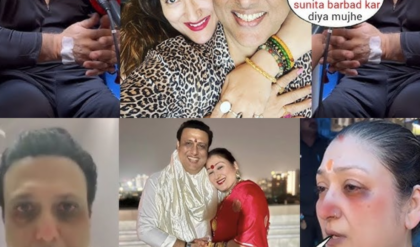The Philippine Volleyball League (PVL) is a professional volleyball league in the Philippines. It is one of the most popular sports leagues in the country, and it has been growing in popularity in recent years.
The PVL is currently in its 2023 season. The season is divided into two conferences, the Open Conference and the Reinforced Conference. The Open Conference is for all teams, while the Reinforced Conference is for teams that have signed up for the conference.
The PVL has recently made some changes to its eligibility rules. These changes have caused some controversy among fans and players.
One of the most notable changes is that the PVL has now made it mandatory for all players to have played in the Philippines for at least two years before they are eligible to play in the league. This rule has caused some players to be ineligible to play in the PVL this season, including Alohi Robins-Hardy, a talented Filipino-American volleyball player.
Another change to the PVL’s eligibility rules is that the league has now made it mandatory for all players to be at least 18 years old before they are eligible to play in the league. This rule has caused some young players to be ineligible to play in the PVL this season.
The PVL has also made some changes to its team restrictions. The league has now limited the number of foreign players that each team can sign to two. This rule has caused some teams to have to make difficult decisions about which players to sign.
The PVL’s changes to its eligibility rules and team restrictions have been met with mixed reactions. Some fans and players have praised the changes, saying that they will help to make the league more competitive. Others have criticized the changes, saying that they are unfair to players and teams.
Despite the controversy, the PVL remains one of the most popular sports leagues in the Philippines. The league is expected to continue to grow in popularity in the coming years.
PVL Eligibility Rules and Team Restrictions
The PVL has made some changes to its eligibility rules and team restrictions for the 2023 season. These changes have caused some controversy among fans and players.
One of the most notable changes is that the PVL has now made it mandatory for all players to have played in the Philippines for at least two years before they are eligible to play in the league. This rule has caused some players to be ineligible to play in the PVL this season, including Alohi Robins-Hardy, a talented Filipino-American volleyball player.
Another change to the PVL’s eligibility rules is that the league has now made it mandatory for all players to be at least 18 years old before they are eligible to play in the league. This rule has caused some young players to be ineligible to play in the PVL this season.
The PVL has also made some changes to its team restrictions. The league has now limited the number of foreign players that each team can sign to two. This rule has caused some teams to have to make difficult decisions about which players to sign.
The PVL’s changes to its eligibility rules and team restrictions have been met with mixed reactions. Some fans and players have praised the changes, saying that they will help to make the league more competitive. Others have criticized the changes, saying that they are unfair to players and teams.
Despite the controversy, the PVL remains one of the most popular sports leagues in the Philippines. The league is expected to continue to grow in popularity in the coming years.
What are the benefits of the PVL’s new eligibility rules and team restrictions?
There are a number of benefits to the PVL’s new eligibility rules and team restrictions. One benefit is that these changes will help to make the league more competitive. By limiting the number of foreign players that each team can sign, the PVL will be able to create a more level playing field for all teams.
Another benefit of the PVL’s new eligibility rules and team restrictions is that these changes will help to develop local talent. By giving more opportunities to Filipino players, the PVL will be able to help to develop the next generation of volleyball stars.
What are the drawbacks of the PVL’s new eligibility rules and team restrictions?
There are also some drawbacks to the PVL’s new eligibility rules and team restrictions. One drawback is that these changes may make it more difficult for some teams to compete. Teams that are unable to sign top foreign players may struggle to compete against teams that have signed top foreign players.
Another drawback of the PVL’s new eligibility rules and team restrictions is that these changes may discourage some foreign players from coming to the Philippines to play volleyball. If foreign players feel like they are not welcome in the league, they may choose to play elsewhere.
What is the future of the PVL?
The PVL is a young league, but it has already made a significant impact on the Philippine sports scene. The league is expected to continue to grow in popularity in the coming years.
The PVL is also expected to continue to make changes to its rules and regulations. These changes will help to ensure that the league remains competitive and fair.
The PVL is a great source of entertainment for Filipino sports fans. The league is also a great platform for Filipino volleyball players to showcase their skills. I believe that the PVL has a bright future ahead of it.
Conclusion
The PVL has made some changes to its eligibility rules and team restrictions for the 2023 season. These changes have caused some controversy among fans and players. However, the PVL remains one of the most popular sports leagues in the Philippines. The league is expected to continue to grow in popularity in the coming years.
PLAY VIDEO:





